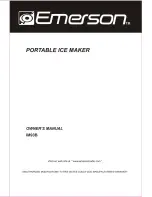
Intermec ColorCoder V4 – Service Manual Ed. 1
6
Chapter 0 Introduction
This Service Manual contains the basic information for the carrying
out of after-sales service to maintain product quality and perform-
ance of the Intermec ColorCoder V4 printer.
The contents and make-up of the chapters are as follows.
Chapter 1
General Description
Broad features, specifications, and parts of the ma-
chine.
Chapter 2
Operation
Description of the principle of operation of the me-
chanical and electrical systems, their functions, and
timing of operations.
Chapter 3
Mechanical System
Description of the mechanical system, its disassembly,
assembly, and adjustment.
Chapter 4
Installation
Location and installation procedure.
Chapter 5
Maintenance and Servicing
Parts requiring periodic replacement, consumable
parts, and periodic servicing.
Chapter 6
Troubleshooting
Troubleshooting and service modes.
Appendix
General circuit diagram.
List of packaging parts.
List of special purpose tools.
Information in this manual is subject to change. Notification of such
changes will be given in Printer Technical Bulletins.
The information contained in this Service Manual and the Printer
Technical Bulletins is essential to proper maintenance of the
ColorCoder V4 printer.
This Service Manual is supplemented by the following publica-
tions, which the service technician also should keep easily avail-
able:
• Intermec ColorCoder V4; User's Guide (multilingual)
• Intermec ColorCoder V4; Installation & Operation manual
• Intermec ColorCoder V4; Spare Parts Catalogue
• Intermec ColorCoder V4; Installation Instructions
(for various options)
Please note that the operations described in this manual only should
be carried out by skilled and authorized personnel with proper
training and full understanding of written English. The printers
contain wires and circuits with high voltage, which implies the risk
of electrical shock. Moving parts may also cause harm, if incor-
rectly manipulated.
It is assumed that the reader possesses reasonable skills in mechan-
ics and electronics. It is also assumed that the reader has access to
the standard tools of an electronics workshop.
0.3 Preface








































